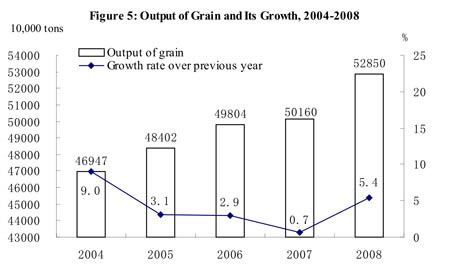Statistical Communiqué of the People's Republic of China on the 2008 National Economic and Social Development
Adjust font size:
National Bureau of Statistics of China
February 26, 2009
In 2008, under the leadership of the Communist Party of China (CPC) Central Committee and the State Council, the people of all nationalities of China, taking as the guidance of Deng Xiaoping Theory and the important thought of "Three Represents", implemented earnestly the scientific approach to the economic and social development. They united as one with indomitable spirit to fight against the grave natural disasters and international financial crisis, and national economy kept fast growth and all social undertakings achieved new progress.
I. General Outlook
In 2008, the gross domestic product (GDP) of the year was 30,067.0 billion yuan, up by 9.0 percent over the previous year. Analyzed by different industries, the value added of the primary industry was 3,400.0 billion yuan, up by 5.5 percent, that of the secondary industry was 14,618.3 billion yuan, up by 9.3 percent and the tertiary industry was 12,048.7 billion yuan, up by 9.5 percent. The value added of the primary industry accounted for 11.3 percent of the GDP, up by 0.2 percentage point over that in the pervious year, that of the secondary industry accounted for 48.6 percent, up by 0.1 percentage point, and that of the tertiary industry accounted for 40.1 percent, down by 0.3 percentage point.
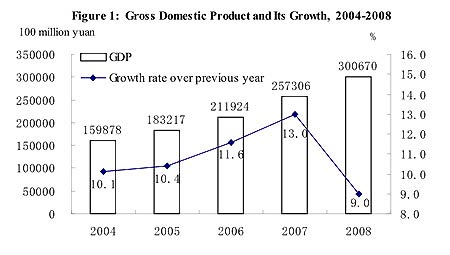
The general level of consumer prices in China was up by 5.9 percent over the previous year. Of this total, the prices for food went up by 14.3 percent. The prices for investment in fixed assets were up by 8.9 percent. The producer prices for manufactured goods increased by 6.9 percent, of which, the prices for means of production increased by 7.7 percent, and for means of subsistence grew by 4.1 percent. The purchasing prices for raw materials, fuels and power went up by 10.5 percent. The producer prices for farm products were up by 14.1 percent. The prices for means of agricultural production were up by 20.3 percent. The sales prices for housing in 70 large and medium-sized cities were up by 6.5 percent, of which, that for new residential buildings went up by 7.1 percent, for second hand housing grew by 6.2 percent, and the prices for rental and leasing were up by 1.4 percent.
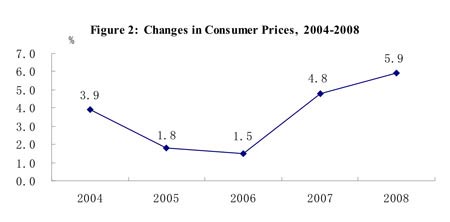
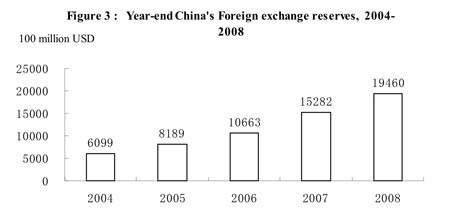
At the end of 2008, the total of employed people in China numbered 774.80 million, 4.90 million more than that of 2007. Of this total, 302.10 million were employed in urban areas, a net increase of 8.60 million, a newly increase of 11.13 million. The urban unemployment rate through unemployment registration was 4.2 percent at the end of 2008, an increase of 0.2 percentage point over that of 2007.
At the end of 2008, China's foreign exchange reserves reached US$1,946.0 billion, an increase of US$417.8 billion as compared with that at the end of the pervious year. At the end of the year, the exchange rate was 6.8346 RMB to US$1, an appreciation by 6.9 percent over that at the end of 2007.
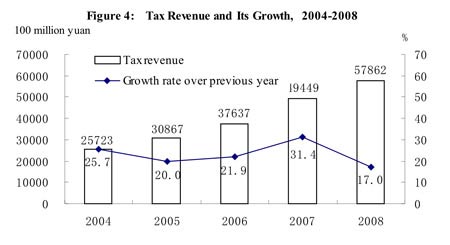
The taxes collected in the whole year reached 5,786.2 billion yuan (excluding tariffs, farm land taxes and deed taxes), up by 17.0 percent or an increase of 841.3 billion yuan over 2007.
